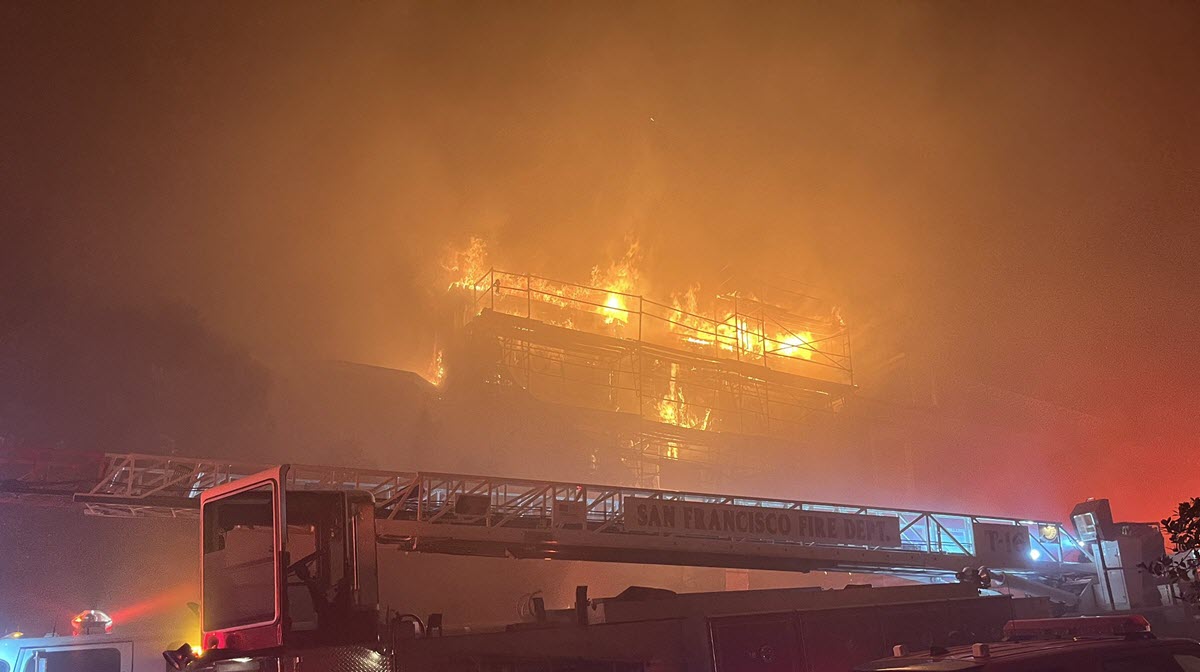Amid the agricultural fields in Sacramento’s Yolo bypass where rice, tomatoes and other crops are planted each year, Jacob Katz strolled over to a crop no one would imagine growing in any field.
He waded out into a flooded field where a string of large boxes sat — and dipped a green fish net inside producing a handful of squirming tiny chinook salmon. Katz quickly dumped the fish back into the pen moving on to the next box.
“These pens are full of young juvenile salmon,” Katz said slushing through the water.
For the past five years, Katz, who is senior scientist for the advocacy group California Trout, has used flooded rice fields to raise juvenile salmon. The experiment, known as Project Nigiri set out to demonstrate that the Yolo Bypass’ abundant flood plains can also make perfect habitat for fish in the winter. Better even than a river.
“What we’ve been showing out here,” Katz said, “is that these rice fields in the bypass can grow food for people in the summer, and food for fish in the winter.”
Katz believes the rice fields make a better habitat for than their native rivers — which he calls deserts for the salmon’s key food source — bugs.
To illustrate the theory behind raising fish where few fish have ventured, Katz dipped a small aquarium net in the water and dumped it into a white plastic tray. The tray came alive with thousands of tiny bugs writhing around like specks in a dust storm.
Local
“This represents a bug buffet where these fish can get large, they can get strong,” Katz said. “Those are like a filet mignon if you’re a baby salmon.”
During some years, Katz has released the tiny fish directly into the water-soaked rice fields. This year he’s experimenting with pens to keep track of specific fish. The salmon will later be released into the river to continue their journey to the ocean.
A couple miles away, another phase of Project Nigiri is underway, where a research team from U.C. Davis’ Center for Watershed Sciences is monitoring three more pens of salmon floating in the Sacramento River. Each week the researchers collect the tiny fish and weigh and photograph them.
“We have caged fish in the river,” said researcher Eric Holmes, “and we’re looking at growth rates in the river compared to the flood plain.”
Katz said in the five years of the project, the fish raised in the flood plain rice fields have grown larger and more robust than their river counterparts. He explained that’s because rivers run cold and swift and accumulate fewer insects for the fish to eat than the sedentary flooded fields.
“Fish grow much more quickly out here on the flood plain because this is where the food is,” Katz said.
Fishing interests have blamed the decline of chinook salmon in the Sacramento River on upstream dams and the construction of levies which Katz said have walled off the rivers from the abundant food source on the flood plains.
The project poses the theory that reattaching the flood plains to the rivers would improve the chances of the salmon as they head to the ocean.
“We’re trying to improve conditions for the fish before they leave their natal waters,” Holmes said.
To punctuate the dire situation on the rivers, California fishery managers recommended canceling most of this year’s commercial and recreational salmon fishing season because of low returns on the Sacramento River. The news forecasts a bleak summer for struggling fishermen.
Katz said his vision is to refocus California’s water systems which he thinks are antiquated.
“What we’re talking about is gates put in these levies that allow fish and water out into very specific areas at specific times of year,” Katz said.
In a time where environmental interests often collide with farming in the struggle for water, Katz said the project might demonstrate the two can work together. In some areas, barren winter fields could become habitat for fish, before returning to agriculture in the Spring.
“What we’d really like to see is the flood plain and the river channel reconnected,” Katz said, eyeing the floating pens, “So that the natural food productivity of the Central Valley can once again flow towards the river channel where fish can once again take advantage of it.”



